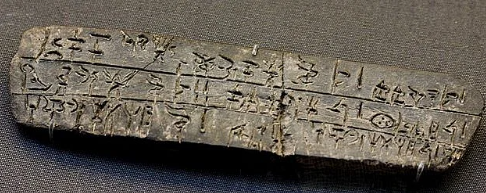Crete, the largest of the Greek islands, is a land steeped in history and cultural richness. Its heritage of writing, spanning several millennia, offers a fascinating glimpse into the island’s intellectual and artistic achievements. From ancient scripts and medieval manuscripts to modern literary contributions, the evolution of Cretan writing reflects the island’s dynamic history and its pivotal role in the broader Mediterranean world. Exploring the rich heritage of Cretan writing reveals a legacy that continues to influence and inspire.
Ancient Beginnings: The Minoan Civilization
The origins of Cretan writing can be traced back to the Minoan civilization, which flourished from approximately 3000 to 1450 BCE. This period marked the emergence of some of the earliest known scripts in Europe.
Linear A
- Undeciphered Script: Linear A is the earliest form of writing associated with the Minoans. Despite extensive research, it remains undeciphered, adding an element of mystery to the island’s ancient past.
- Administrative Records: Linear A tablets have been found in palatial sites such as Knossos and Phaistos, indicating their use in administrative and religious contexts. The script’s symbols suggest a complex society with advanced record-keeping practices.
Linear B
- Deciphered Script: Linear B, developed around 1450 BCE, was used by the Mycenaeans who succeeded the Minoans. This script, an early form of Greek, was deciphered in the 1950s by Michael Ventris and John Chadwick.
- Economic and Administrative Uses: Linear B tablets provide detailed accounts of economic transactions, inventories, and bureaucratic activities. These records offer valuable insights into the administrative organization of Mycenaean Crete.
The Classical and Hellenistic Periods
Following the decline of the Minoan and Mycenaean civilizations, Crete continued to be a center of literary and intellectual activity during the Classical and Hellenistic periods.
Literary Contributions
- Homeric Influence: Cretan scribes and poets were influenced by Homeric epics and other classical Greek literature. This period saw the integration of Cretan themes into the broader tapestry of Greek mythology and storytelling.
- Philosophical Works: The island’s intellectual circles engaged in philosophical discourse, contributing to the development of Greek philosophy. Philosophers such as Epimenides, a semi-legendary figure, hailed from Crete and influenced contemporary thought.
Byzantine and Medieval Manuscripts
The Byzantine period (330-1204 CE) marked a flourishing of manuscript production in Crete, driven by the island’s strategic importance and vibrant monastic communities.
Religious Texts
- Gospels and Psalters: Byzantine manuscripts from Crete include beautifully illuminated Gospels and Psalters. These works are characterized by intricate miniatures, ornate calligraphy, and the use of gold leaf.
- Hagiographies: The lives of saints and religious figures were chronicled in hagiographies, which served both devotional and educational purposes.
Secular Works
- Historical Chronicles: Chronicles from this period provide detailed accounts of local events, administrative records, and biographical sketches. These manuscripts offer valuable insights into the island’s political and social history.
- Literature and Poetry: Secular literature, including poetry and philosophical texts, flourished during the Byzantine era. These works reflect the intellectual pursuits of Cretan scholars and their engagement with classical Greek thought.
Venetian and Ottoman Periods
The Venetian (1204-1669) and Ottoman (1669-1898) periods brought new influences to Cretan writing, blending Western and Eastern traditions.
Venetian Influence
- Humanistic Texts: Under Venetian rule, Cretan scholars were exposed to the Renaissance humanist movement. Manuscripts from this period include translations of classical texts and original works in philosophy, science, and literature.
- Scriptoria and Libraries: Venetian authorities and local monasteries established scriptoria and libraries, facilitating the production and preservation of manuscripts.
Ottoman Contributions
- Multilingual Manuscripts: The Ottoman period saw the creation of multilingual manuscripts, reflecting the coexistence of Greek, Turkish, and Venetian influences.
- Islamic Manuscripts: Ottoman rule introduced Islamic manuscripts to Crete, including Quranic texts, legal documents, and poetry. These works enriched the island’s manuscript heritage with new linguistic and cultural dimensions.
Modern Literary Contributions
The 19th and 20th centuries witnessed significant developments in Cretan writing, driven by political changes and cultural revival.
Nationalism and Independence
- Revolutionary Texts: The period of the Cretan Revolt against Ottoman rule (1866-1869) produced revolutionary proclamations, diaries, and letters. These documents provide firsthand accounts of the struggle for independence.
- Educational Texts: Following Crete’s union with Greece in 1913, educational texts proliferated, promoting national identity and cultural heritage.
Contemporary Literature
- Literary Revival: The 20th century saw a revival of Cretan literature, with authors such as Nikos Kazantzakis gaining international acclaim. Kazantzakis’ works, such as “Zorba the Greek” and “The Last Temptation of Christ,” reflect his deep connection to Crete and its cultural identity.
- Modern Writers: Contemporary Cretan writers continue to explore themes of identity, history, and social change. Their works contribute to the ongoing literary tradition of the island.
Preservation and Access
The preservation of Cretan manuscripts and books is a priority for libraries, archives, and cultural institutions. Efforts focus on both physical conservation and digital accessibility.
Conservation Techniques
- Restoration Projects: Conservation projects involve meticulous restoration of fragile manuscripts, including the repair of damaged pages and stabilization of bindings.
- Climate-Controlled Storage: Manuscripts are stored in climate-controlled environments to prevent deterioration from humidity and temperature fluctuations.
Digital Archives
- Digitization Programs: Digital archives and online platforms, such as the University of Crete’s digital library, provide searchable databases of digitized manuscripts and books. These initiatives increase access for researchers and the public while protecting original documents.
Conclusion
Exploring the rich heritage of Cretan writing offers a journey through the island’s intellectual and cultural history. From ancient scripts and Byzantine manuscripts to modern literary masterpieces, Cretan writing reflects a legacy of creativity, resilience, and cultural exchange. Preservation efforts ensure that this literary heritage remains accessible, allowing future generations to appreciate and build upon the island’s rich tradition of writing. Through these manuscripts and books, the story of Crete continues to inspire and enlighten.


